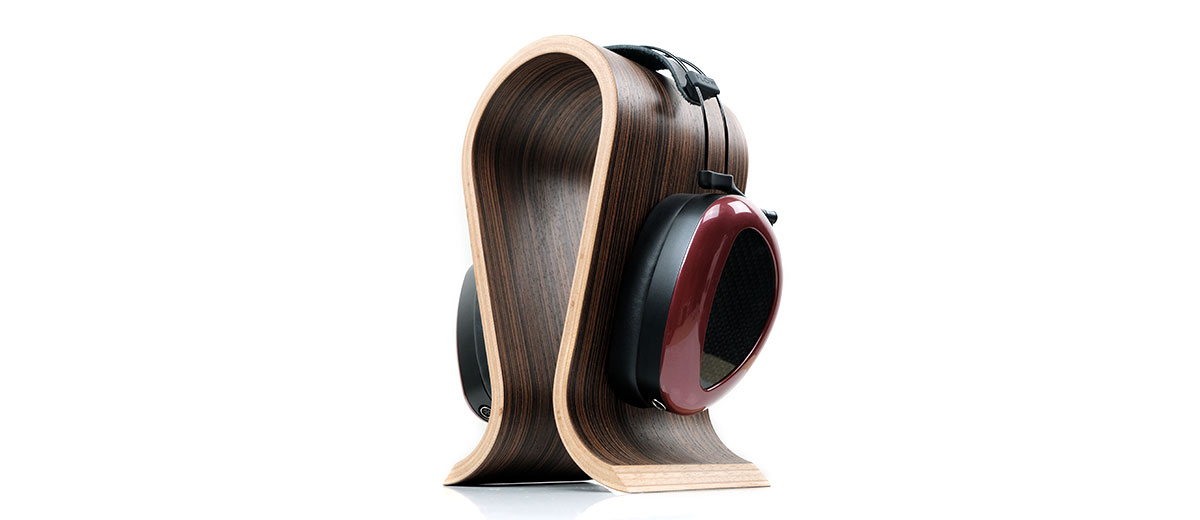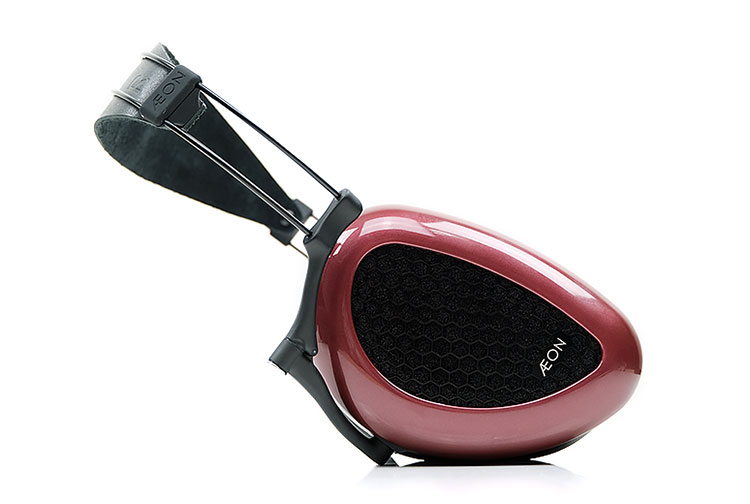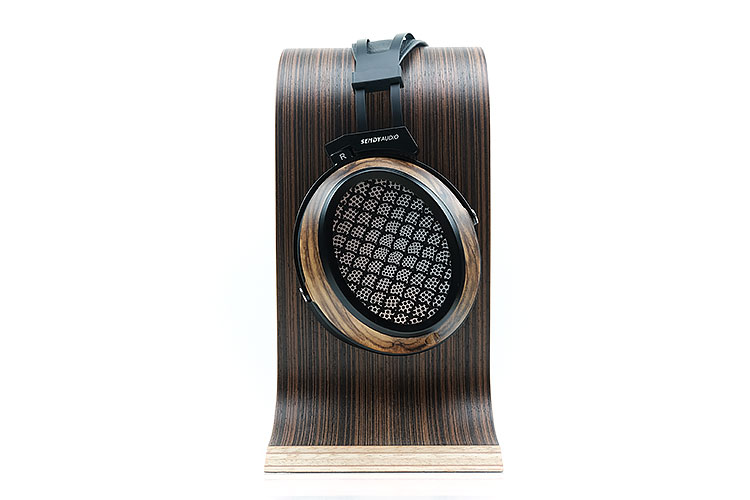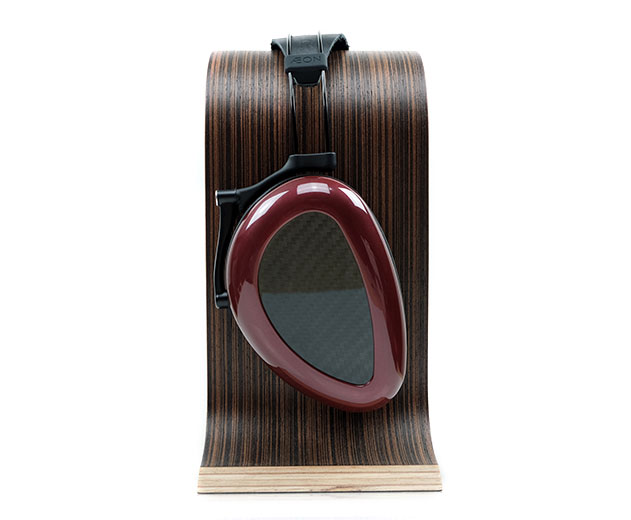Sound Impressions
Summary
There are a number of specific improvements in the AEON 2 Closed over the original that I really like. However, these are clever tweaks that require a fair bit of comparison listening just to understand what makes the AEON 2 Closed a better proposition than the AEON Closed V1.
With that in mind, I am ditching the standard walk bass/mids/treble walkthrough and instead, there will be a bit more focus on those specific changes.
On the surface, and both without the pads, DCA has gone for a more powerful and richer sound signature with the A2C.
You can hear that the better extension right away and it adds a much-improved fundamental all the way up the vocal control, especially chest and mixed voice which now sound more rounded or ‘broader’.
Vocal Texture
The vocal positioning is an interesting debate from the old to the new. I am not convinced the positioning has changed a huge amount between the two variants. However, the better body, more solid fundamental, and smoother treble allow more texture to creep into the notes making vocals more engaging.
To put it crudely, the AEON 2 Closed vocal positioning feels relatively unchanged but the notes sound ‘bigger’. That better texture, particularly from the lower mids into the vocal presence region means more complex detail can shine through.
Better Fundamental
A lot of this is driven from a more solid low-end tuning compared to the original. The first version sounds a little on the thin side, perhaps with more roll-off sub-100Hz whereas the AEON 2 Closed is rock solid down to 20Hz with a more noticeable mid-bass bump at 100-200Hz.
That is where the new version gets that heightened level of PRaT, staging depth, and power into those lower pitching instruments. It also gets a healthy injection of added warmth into the overall timbre whereas the original AEON Closed timbre sounds a lot cooler and a shade leaner.
Guitars now sound meatier or properly fleshed out whereas before, they sounded thinner with less presence.
The older version still puts a shine on complex shredding solos where power and body are not such an essential but the vast majority of music I play and what I know Dan Clark prefers plays out better with that enhanced power and body.
Harmonic Balance
A lot of the ‘coolness’ in the original AEON Closed timbre is also drawn from a treble performance that is quite forward and sparkling without the pads to tame it down. Higher pitching notes beyond 2-3k have a dominant odd-harmonic tone. What that means is less body and texture and more of a contrast or a slight sharpness to the overtone.
The AEON 2 Closed treble is smoother, more coherent meaning the balance in the timbre and tone is more natural sounding throughout the midrange up into percussion timbre that touches the presence region.
It sounds a lot more refined and a little more life-like on those cymbal crashes, tom brushing, and hi-hat hits.
Example
A very good example of how the old and new differ is in Agnes Obel’s “Run Cried The Crawling” from her 2013 Aventine Album. The mix here is sparse, ethereal in quality almost with an underlying acoustic strum, violin, and percussion beat. It is meant to sound spacious except for Agnes’s vocal which is very much front and center.
Agnes’s own pitching is on a lower key than normal, so it is more breathy with a purposeful lazy delivery. I guess you could call it a slow ‘sulky sound’.
On the original Agnes’s vocal is slightly further forward but also it almost sounds like a different key because of how much more treble creeps into the harmonic order. There is less even-harmonic overtone and body and you do not pick up on the little quirks in her breathing or mouth formation as easily. In short, a brighter mix.
Underneath the vocal mix, and particularly the brief violin passages, the added texture in the notes from the AEON 2 Closed allows for individual strings in the chords to shine through better.
On the older version, no issue on the presence of the violin play but the individual chord strings merge into one overall note, so it loses a bit of complexity for me. There is also less fundamental and more of a drier attack emphasis on the older version.
Synergy
Tuning Pads
The AEON 2 Closed sound signature is not fixed in stone. That is the DCA almost since they began making headphones. It does help tine tune the synergy with sources and amps if the stock sound signature is not exactly where you want it to be.
There are 3 sets of pads included with the AEON 2 Closed: a white pad with 1 notch, a black stiff pad with 1 notch, and a foam-type pad with no notches, all in pairs. The white pads are softest of the three pads supplied.
The black pads are made of a slightly coarser and stiffer acoustic material and slightly thinner than the white pads. The final set of pads are a thicker foam-like material.
Black Foam Pads
The black foam pads seem to be more about shaving off a little treble sparkle but not by a huge amount. You will notice it a bit more on hi-hats where the attack is a bit more blunted sounding and the stock signature has more bite in the percussion timbre.
The low-end change is not as radical as the stiffer black pads, (see below), but the mids sound marginally softer which is natural is you are going to attenuate the top-end a little.
White Pads
The white pads with a small notch tone down the treble top-end by 1-2dB and allow the low-end warmth to be the more dominant factor in the presentation. This pad will work for those who maybe want something a bit softer or more euphonic in tone.
However, I was not a fan personally in the way vocals lost a bit of presence and contrast in note texture. Smoother and more weighted sounding? Yes, but also a bit boring in comparison to the stock sound.
Black Stiff pads
I prefer the black stiff pads over the white in terms of how they tweak the signature. I still much prefer the vibrant stock signature but these pads still allow that core sound to breathe better than the white pads.
What you do get is some excellent low-end fullness without notes sounding overly even-harmonic or too rounded. The top-end has a slightly more liquid tone but again without it ever sounding pushed down to the point where a lack of air is a problem.
I think if you want some additional power and a bit more treble and upper-mids smoothness then these are the best alternatives to the stock sound.
Efficiency
The older AEON was rated at 13-ohms and 93dB sensitivity rating, so the 13Ω AEON 2 should be close to that SPL at 92dB. First of all, there seems to be little or no difference to the amount of power you need on the new AEON 2 Closed compared to the original AEON Closed.
What does that mean? You need a high gain and about a minimum of 60 on the volume, so not the most efficient of headphones. You will see that higher current demand quite easily from portable sources such as DAPs and do not even think about plugging these into smartphones.
Scaling
No question the AEON 2 Closed can scale with resolution and dynamic range all taking a qualitative jump from a DAP to an amplifier.
For example, in terms of timbre, I would pick the Cayin N6ii with the E01 motherboard for the smoothest delivery. The timbre is at its most analog or tube sounding with its Class AB mode in high gain. For those that need a bit more sharpness and clarity, the Lotoo PAW6000 or the PAW Gold Touch is a better fit.
However, move the AEON 2 Closed to a top-tier amp like the dCS Bartok with the DUMMER cable single-ended and you get both the natural analog tone of the Cayin N6ii plus the clarity of the Lotoo PAW Gold Touch combined.
More than that you get far more dynamic range, far more headroom, and generally a more immersive experience.
Granted, that is a $15k integrated top-end DAC and amp combo but a much cheaper solution is to grab that balanced 3-pin XLR VIVO cable and go balanced with amps that deliver 1W and above.
The VIVO cable does an excellent job in terms of enhanced dynamic range. Paired to good quality amps such as the Violectric V281 balanced the AEON 2 Closed/VIVO was light years ahead of the portable sources using DUMMER.
This combo also had the most low-end quantity of all the amps tested, which includes the dCS Bartok by the way.
However, this combo does not sound as resolving or as well-layered on the low-end as the Bartok. You get the quantity but not as much quality. Still, compared to the 0.5W 32Ω load output stages of something like the PAW Gold Touch DAP with the DUMMER cable, it will give you a lot more.
My personal suggestion, 1W upwards balanced with the VIVO cable is perfect with the AEON 2 Closed.
Select Comparisons
(Comparisons completed with a dCS Bartok, Cayin’s N6ii/E01 DAP, and balanced via XI Audio’s Broadway with a Topping D90 DAC)
Dan Clark Audio AEON 2 Open
$899
Technical
From what I gather the driver and FLOW technology are essentially the same as the AEON 2 Closed version. That means a single integrated air-free machined FLOW element and planar driver design at 62 x 34mm wide for the diaphragm.
The specifications do have a minor SPL difference at 92dB for the closed version and 94dB for the open version. However, the impedance is unchanged at 13Ω for both units.
Design
On the design side, the overall red form factor, housing, and articulated half gimbal folding mechanism are exactly the same. The open version uses the same hirose connectors and DUMMER cable as the closed version also. The comfort is every bit as good as the closed version but isolates a lot less.
However, there are 3 alterations on the open-back version, 2 distinct and one subtle. The first distinct difference is the open honeycomb grill plate of the original AEON 2 open as opposed to closed. The second is the use of pads with perforated inner walls.
The final more subtle difference is a non-mesh venting port on the side of each cup. That final part is not something you would notice unless you are staring at them up close and side by side. Here I presume it is for enhanced airflow.
Tuning
It is early days with the AEON 2 open or the A2O for short, so my thoughts might change when we bunker down for the main review.
However, right off the bat, the A2O has a bit more upper mids and treble energy than the more subdued AEON 2 Closed top-end. It sucks you more into the mid’s performance than the Closed version as a result.
Not that the Closed is muted but rather there is more of a sustained elevation on the Open tuning from around 2k onwards. On the low-end, the Closed has the better sub-bass whereas the Open drops it off marginally in favor of more mid-bass elevation and warmth.
The Open actually holds that warmth for a bit longer into the lower mids compared to the A2C tuning pushing the lower mids a bit further forward. Mid-centric guitar rhythm work seems more in focus and slightly cleaner also since it pulls from that fizzier top-end for its upper harmonic order.
The Closed version, in turn, has a bit of a stronger bass fundamental with the stronger sub-bass performance. Male vocals seem a little more solid on the Closed version but I do really like how the female vocal performs on the Open version. It sounds more vivid, less rounded, and a bit airier.
In terms of staging, the AEON 2 Closed is deeper sounding, the AEON 2 Open taller, and more extended which in turn gives a bit of an added lift to the spacing in the mids.
Imaging on the mids and lower treble on the Open is easier to pick up with that additional odd-harmonic crispness to instrumental notes also.
SendyAudio Aiva
$599
Technical
The Aiva is an open back circumaural planar headphone design but given its close price point, it does make for an interesting comparison. Though the design on the outside has a cursory glance to DCA designs, the driver inside is quite different.
The Aiva uses a larger 97 x 76mm planar driver with an asymmetrical double NdFeB magnet array. The Aiva driver is also very thin indeed. It uses a TUYU ultra-nano composite diaphragm which is similar in thickness to the alternatives used by Hifiman.
This particular build uses a 0.0005mm aluminum foil which is a commonly used trace coil material for most planars outside of the HE6’s highly resistive gold option. The AEON 2 closed driver is single-sided as opposed to dual-magnet with a very different airflow structure (FLOW).
The Aiva is rated at 32Ω and 96dB SPL compared to the AEON 2 Closed 13Ω and 92dB SPL rating. Both need a decent amp to get the best out of them and ideally, more so for the AEON 2 Closed which needs a bit more juice than the Aiva.
I would be running these at a minimum of 500mW into a 32Ω and comfortably at 1W. If you can go balanced with a punchy solid-state amp 1W and above, so much the better for both of them.
Design
Now, the AEON 2 Closed is much lighter than the Aiva and there are few reasons for that 100g difference. The first is in the use of a smaller driver with a single-sided magnet design instead of dual magnets on the Aiva.
The second is the lighter Nitinol headband of the AEON 2 Closed compared to the dual spring-steel string steel headband of the Aiva. The AEON 2 Closed headband structure is much smaller in size and also more flexible.
There would also be some additional weight in the full-sized gimbal of the Aiva compared to the half gimbal of the AEON 2 Closed.
The final key difference is in the use of wood on the Aiva cups which are much heavier than the lighter molded plastics of the AEON 2 Closed. The zebrawood strong grain natural wood cups do look beautiful, however.
It is really a toss-up for me on which cups look “the best”. With the Aiva cups, each one will be unique to each owner which some might find appealing.
Cables
Both have detachable cable systems but the Aiva uses a standard 3.5mm TRS locking system compared to the more secure Hirose connectors of the AEON 2 Closed. One cool thing is the 4.4mm termination on the Aiva cable out of the box.
That will cost you an extra $200 on the AEON 2 Closed as its only available on the VIVO cable option. However, the VIVO cable is a better-quality cable than the 6N OCC wire of the Aiva.
Comfort
The Aiva pads are plenty soft but have more rounded openings than the elongated cup of the AEON 2 Closed. Whilst both clear the ears, the Aiva pads do lack a bit of depth compared to the AEON 2 Closed. Big ears can end up necessarily touching the drivers.
Clamping is a bit firmer on the AEON 2 Closed as well as the overall balance. The headband strap on the Aiva is every bit as useful as the AEON 2 Closed and does feel exceptionally soft on the head.
Isolation is way better on the AEON 2 Closed but that should not be a surprise wondering the Aiva is an open-back design
Tuning
Low-end/Mids
Of late I have been suggesting the Aiva as a slightly cheaper alternative to the AEON V1 if the budget did not stretch. I do not think I can do that now after hearing the AEON 2 Closed.
Granted, they are open backs but compared to the AEON 2 Closed they sound much smaller and more congested with a vocal delivery far further back in terms of imaging.
I think part of the issue there is that midrange dip on the Aiva from 2k into the lower treble that tends to hollow out the sound a little. The AEON 2 does not have an extreme mids dip, especially on the lower mids which sound further forward, fuller, and more impactful in their delivery.
The low-end between these two also shows some distinct differences. The AEON 2 Closed goes a lot deeper with a steady almost linear like performance from 100Hz down to 20Hz.
Then, there is a bit of a mid-bass hump that delivers that warmth up into the lower mids and fleshes out the fundamentals better in instrumental notes.
The Aiva is more of a mid-bass creature erring to punch over power. Sub-100Hz it sounds comparatively rolled off, so it delivers less depth and does not sound as planted as the AEON 2 Closed.
That does contribute to the more compact staging signature of the Aiva and why the AEON 2 Closed sounds more spacious.
Top-end
Treble is a different matter. The AEON 2 Closed has some energy beyond the lower treble but it is not as forward as the Aiva top-end tuning. Thus is sounds more relaxed and liquid sounding in its timbre.
Also, the Aiva’s more energetic upper treble is complemented by a muted lower treble. You perceive more energy and top-end extension but its lack of presence in the lower treble robs the timbre of percussion and a lot of upper mids timbre of body.
Its a clean treble sound, high contrasting with the mid-bass punch but also a leaner tone with not a huge amount of instrumental sustain.
The AEON 2 takes the opposite route. It is not as airy or as forward but has more richness in the timbre and the treble is more even sounding. Mids have less suck out, so instruments and percussion sound fuller with more texture and overall a bit smoother.
Campfire Audio Cascade
$799
Technical
On the dynamic side, one of the closest competitors at the AEON 2 Closed price point is the Campfire Audio Cascade. This is also a fairly portable and foldable closed-back design but with some very different characteristics.
The Cascade uses a 42mm beryllium coated PVD dynamic driver as opposed to a planar design, so right away you are going to hear the difference between how planar works out a bass response and a dynamic driver does (see below on tuning).
Design
In terms of design, whilst both are on the compact side the Cascade is really a large supraaural whereas the AEON 2 Closed is a slim circumaural design. Although the AEON 2 Closed is the bigger, it is surprisingly on the lighter side by close to 60g. That is probably down to the materials used by Campfire.
The entire body of the Cascade is a mix of aluminum and stainless steel finished with a plush sheepskin finish pad and a memory foam headband wrapped in faux leather. DCA uses a bigger mix of plastics for the cups but also the light Nitinol for the headband which takes a lot of weight off.
As a result, the AEON 2 Closed its comfier on the head with less vertical pressure due to the soft pressure strap. It also isolates better than the Cascade. Possibly because it clears the ears and seals on the neck whereas the thick pads on the Cascade sit more on the ear.
Performance
The efficiency on paper is different at 38Ω and 102dB SPL for the Cascade and 13Ω and 92dB SPL for the AEON 2 Closed. However, both can suck up a lot of power but for differing reasons.
For the AEON 2 Closed it needs good power to sound optimal, to sound good, and be properly driven.
At 92dB SPL, it is not that efficient though it will not collapse like a deck of cards on a DAP. The Cascade sounds surprisingly good on weaker sources but can scale and sound even better on amps of varying levels of power.
Tuning
Right away that dynamic driver signature is immediately apparent. More so because CA has colored the Cascade to be bottom-heavy, so it hits with a short but hard wallop whereas the AEON 2 Closed is more of a balanced planar bass.
You get a better sense of depth and more detail in the texture of the AEON 2 low-end whereas the Cascade overpowers with that elevated mid-bass low-end. I find the Cascade low-end to be fun but a little one-dimensional and overly colored and can distract as a result.
Because the AEON 2 Closed lower mids transition is a lot smoother than the original version you will find that it has a bit more space and lower mids presence than the Cascade.
The Cascade’s dominant mid-bass is followed by a significant drop in elevation into the lower mids, so instrumental notes play second fiddle to the “thump” and it can sound muddier as a result.
Vocals on the Cascade are a little closer in staging positioning than the AEON 2 Closed due to a bit more 1-2k emphasis whereas the AEON 2 Closed raises a bit more from 2-5k. It has the effect of giving the AEON 2 Closed a grander soundstage or being seated a little further back from the stage.
Treble is a little uneven on the Cascade compared to the AEON 2 Closed. The A2C has some extension but it is also more coherent and balanced for me.
The Cascade has a bit of a 5k lower treble peak which picks up a lot of odd-harmonic overtones in percussion timbre. It can sound exciting and it is tuned I guess to contrast with the mid-bass bloom.
However, it also comes across as steely and harder sounding than the AEON 2 Closed’s smoother percussion timbre, so it can grate.
Our Verdict
There is a lot of good coming out of the new AEON 2 Closed. For a start, that new articulate design combined with the superb comfort and weight levels makes this probably one of the best fitting planar headphones out there today.
No question that the enhanced portability and diminutive carry form factor are substantially enhanced with this second generation.
All that would be for naught if the performance were not superior to the original which it most certainly is. I know something about Dan’s team and their thinking on how music should sound for them since way back on the Alpha Prime.
The AEON 2 Closed fits in with that same philosophy, which is to keep it natural, planted, and relatively easy to listen to without a loss in detail or dynamic range. Mods are just the icing on the cake in terms of useful tweaks.
Grab the VIVO cable and go balanced if you can which is where I think the AEON 2 Closed sounds optimal. Despite its enhanced portability, the AEON 2 Closed is still a killer desktop pairing in the long run.
Dan Clark Audio AEON 2 Closed Specifications
- Driver Size: 62 x 34mm (Diaphragm)
- Efficiency: 92dB/mW SPL
- Impedance: 13Ω
- Weight (without cable): 327g
- Cable: Detachable 2m premium dual-entry cable with 3.5mm and 1/4″ termination







